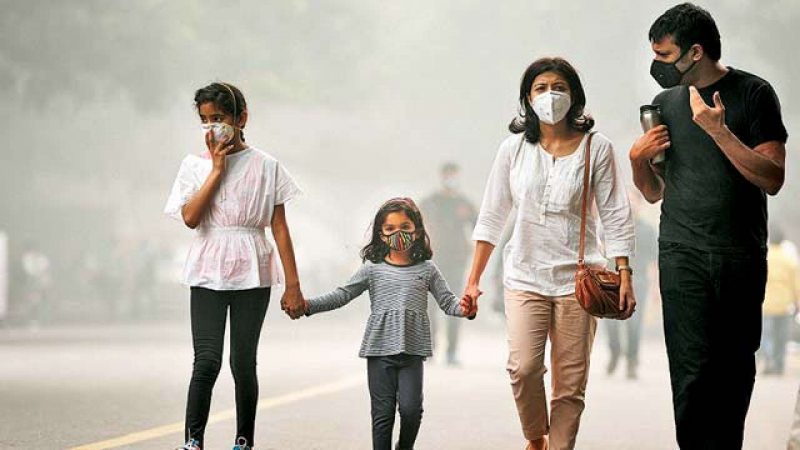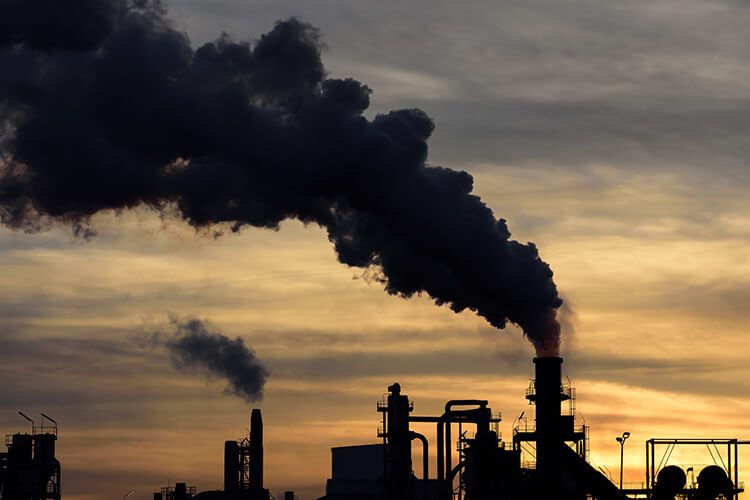As parents we do everything, almost up to a tee, to make sure that we provide the best to our children for their physical and mental development. But when it comes to living in a polluted city, do you think we are doing enough? We all are well aware of the negative effects of air pollution like poorer sleep, nausea, headache, decreased work performance, and various other health issues on adults, but have you considered that the effects could be worse for our children who are still in their developmental stage? Can this high level of air pollution harm their physical and mental development?
Well, studies have shown that the answer to all of these scary questions is a definite yes. Air pollution does affect our children far adversely in comparison to a young adult.
Why Does Air Pollution Affect Children the Most

Unlike adults, babies aren’t born with a fully developed lung set. They only have a 20% lung mass in comparison to an adult. As a result, they breathe far more air and far quicker than adults. They grow a full set of lungs when they grow into teenagers, but till then they breathe in more pollutants than adults. Also, since their lungs are still in the developmental phase, this inhaling of a high amount of pollutants can affect the complete development of their lungs.
Now, breathing in an increased amount of air pollutants is just one side of the problem. Children also have far lower immunity to fight diseases and infections, thus making them prone to developing respiratory diseases caused due to air pollution.
Even if you take the size of the lungs and immunity issues out of the picture, you have to agree that kids are exposed to air pollution for a longer period than adults. Kids spend most of their time outdoors to play and enjoy recess time at school, while adults stay inside a properly ventilated and now fitted with air cleaning devices at their workplace.
All of these factors together have a detrimental effect on the health of a child.
How Air Pollution Affects Kids’ Lungs
In the early 1990s, researchers at the Southern California Children’s Health Study studied 2000 children born in the 1990s and early 2000s. The study showed that the children who were raised in an environment with a bad air quality index had decreased lung development. This is an issue that cannot be addressed even when they grow into adults and will always have lower lung capacity.
These children are also more likely to develop respiratory diseases like asthma and lung cancer in comparison to children who were raised in environments with a healthy air quality index.
What is AQI and what are the healthy levels of AQI?
I feel that we all have heard and read this term AQI and we are yet to understand what its healthy levels are for us. Consider AQI or Air Quality Index as a yardstick or a benchmark from 0 to 500 to understand the quality of air around us. AQI levels below 50 are considered healthy and AQI levels above 300 are considered hazardous. The five major air pollutants that determine the air-quality index are carbon-monoxide, ground-level ozone, carbon monoxide, sulfur dioxide, nitrogen dioxide, and particle pollution (particulate matter or PM2.5 and PM10),. Here is a chart that can help you understand AQI and what it means for you.
| AQI Colour | Air Quality Index | Level of Concern | Description of Air Quality |
| Green | 0 – 50 | None | The air quality is healthy and poses no risk to anyone. |
| Yellow | 51 – 100 | Moderate | The air quality is acceptable; however, sensitive people might feel some discomfort. |
| Orange | 101-150 | Unhealthy for sensitive members | The sensitive members of society would like to be affected by the levels of air pollution. The general public might not be affected. |
| Red | 151 – 200 | Unhealthy | The general public might start getting affected by air pollution and feel discomfort. Sensitive members may experience worse health effects. |
| Purple | 201 – 300 | Very Unhealthy | The health risks are high for everyone. |
| Maroon | 300 and higher | Hazardous | The quality of air pollution is hazardous and every member of the society would be affected. |
The Dangers of Air Pollution during Pregnancy
Well, sadly being an adult with high immunity cannot protect the unborn baby.
- Premature Birth: If you live in an unhealthy AQI area and are breathing high levels of pollutants, you are more likely to give premature birth.
- Low Birth Weight: The fetus, due to inhaling air pollutants, might have a low birth weight due to the restricted transfer of nutrients through the placenta.
- Increased Risk of Respiratory Diseases: The baby has a higher chance of contracting and developing respiratory diseases like asthma.
- Asthma: The mother, if living in a very unhealthy and hazardous AQI level area, can also cause elevated blood pressure and decreased function of the liver and kidney. If untreated, the baby might suffer due to a lack of oxygen.
- Infertility: Prolonged exposure to air pollution also increases the risks of miscarriage. Air pollution is one of the reasons for increased infertility in both males and females.
Managing Air Quality during Pregnancy and Early Years
Well, there aren’t many things that you can do to manage the air pollution until and unless the government takes some serious steps to combat the same, but there are certain steps that you can take to reduce air pollutants around you and your children.
Steps to Improve Indoor Air Quality
- Avoid smoking indoors. Well, the best measure would be to quit smoking but the first step would be to not smoke inside your home and in and around children or pregnant women. Smoking increases the chances of reduced lung development of the fetus as well as of children and has the same effect on lung development as those who were raised in an unhealthy AQI environment.
- Did you know that there are various chemicals in your house that increases the air pollutants around you? Well, you might have harsh chemical cleaners, office supplies like paint, washing solvents with formaldehyde, improper ventilation, and many more. The fumes from these can irritate your nasal and throat cavity increasing the air pollutants. The advice here would be to move towards organic cleaners or cleaners with reduced chemical ingredients. There are many paints available on the market that are chemical-free and are environmentally friendly.
- Increase ventilation in your home. Opening a window might not always be a solution, due to allergens or high AQI, to purify the air inside. Make sure that you have proper HVAC (heating, ventilation, and air-conditioning) at home, and do get these checked regularly to avoid the accumulation of dirt particles and the air vents. Also, adding an air purifier is another solution to purifying the air inside. Do lookout for a purifier with high-efficiency particle arresting (HEPA) air filters.
- If you are pregnant, make sure you check the AQI in your area before stepping out. If the AQI is unhealthy, stay indoors.
- Add air-purifying house plants to curb the level of air pollutants inside your home. Neem is a plant that is easily available and is well-known for curbing the gaseous carbon-dioxide particles from the air. Apart from neem, you can add money plant, bamboo, or peace lily to your home to purify the indoor air naturally.
Boost Immunity with Superfoods
Like mentioned earlier, we know that children have reduced immunity as compared to adults, thus it is essential that we include herbs and foods in their diet that are rich in infection-fighting compounds and improve their immunity to ward of diseases. Pregnant women should also include these superfoods in their diet to boost their immunity to reduce the harmful effects of air pollution:
- Take 1 tablespoon of the mixture containing basil juice, honey, and ginger extract every morning to boost your immunity.
- Another herb that you should include in your diet is turmeric. The compound called curcumin boosts infection-fighting T-cells in the body.
- Add ghee and jaggery to your diet. Ghee promotes an alkaline environment in your digestive system, thus suppressing disease-causing bacteria. Jaggery is high in anti-oxidants and fights free-radicals in your body.
Apart from these, do as much as you can from your side to contribute towards a healthier environment. Some of the easy measures you can integrate into your daily lives are by taking public transportation, reducing the number daily car trips but maybe carpooling with your neighbors or colleagues, making sure that you get your vehicle checked regularly for pollution, and by buying 4+ energy star level equipment for home and office.
Tell us in the comments if you have been taking any of these steps.
